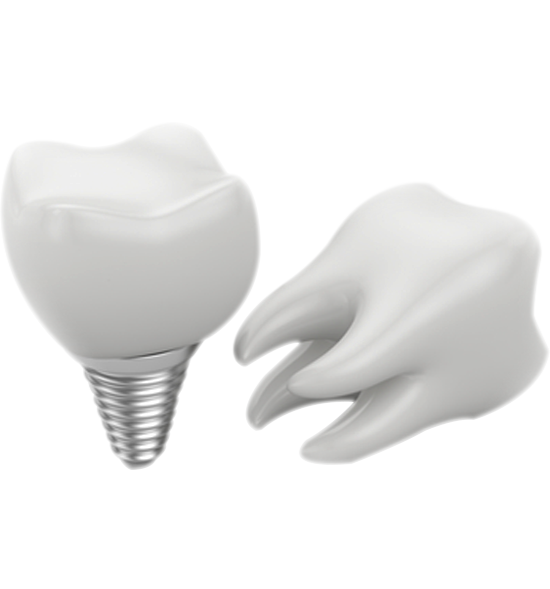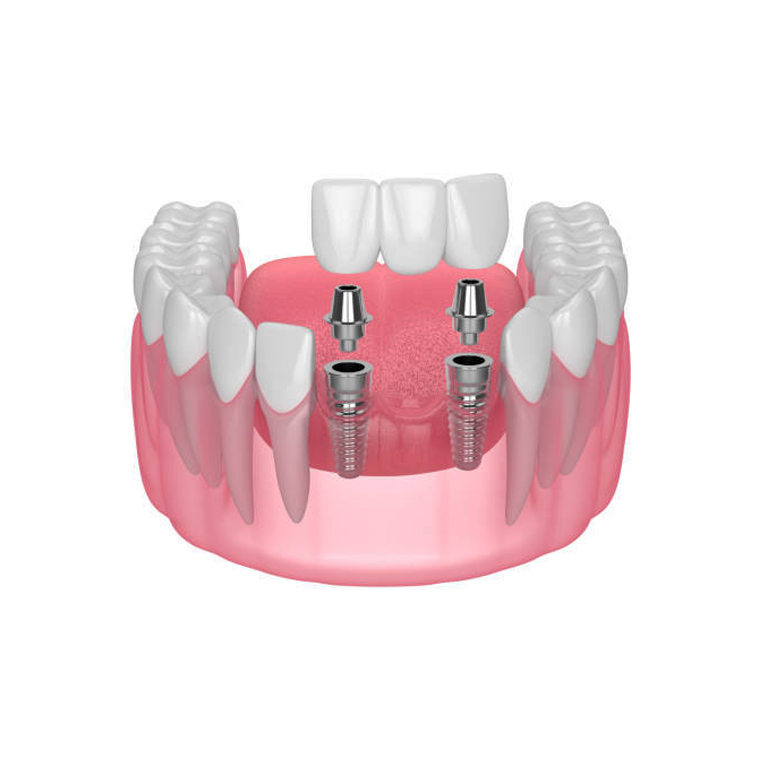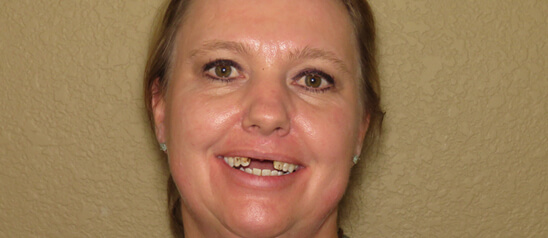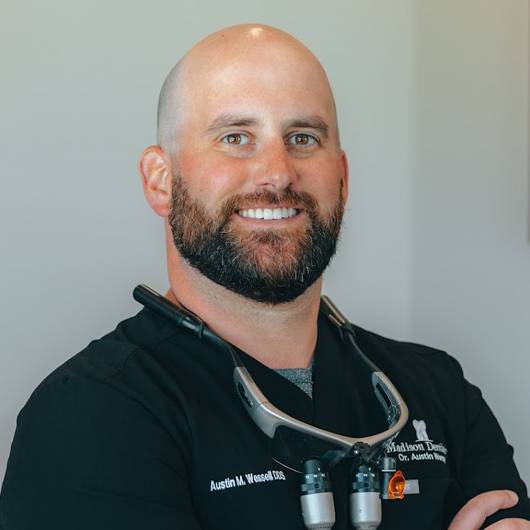DENTAL IMPLANT in Madison, WI
Don’t Suffer With Missing Teeth
Dr. Austin Wessell at Madison Dentistry can place and restore dental implants. You can be confident that our professionals will get to know your specific needs to provide seamless care.
Dental implants are titanium-encased replacement tooth roots. These tooth roots are surgically implanted into the jawbone to stimulate and support your jaw.
A dental implant comprises two parts: a root form and a crown.
Dental implants look and function exactly like natural teeth—you, your friends, and your family cannot tell the difference!
Start-To-Finish Implant Services
Are missing teeth or uncomfortable, ill-fitting dentures taking the joy out of your everyday life? Throw out those messy adhesives and let dental implants change your life! Our skilled dentists at Madison Dentistry have extensive experience in surgical placement and cosmetic dentistry with dental implants. You can receive all your implant care here at Middleton, WI, instead of commuting around town to multiple dentists!

Find Out If You're A
Candidate For Dental Implants

Answer The Following Questions To Learn More About Our Pricing And Financing Options.
How Do Dental Implants Work?
A dental implant is a titanium rod surgically implanted into the jaw to replace a missing tooth root. There is some recovery time required after surgery. During this time, the bone accepts the new implants through a process known as osseointegration. Once osseointegration occurs, restorations can be placed on top to serve as your new teeth!
Your Dental Implant Solutions
Dental implants can be used in a variety of restorative procedures, from single tooth replacements to full mouth reconstructions. Whether you’re missing one tooth or many teeth, there’s an implant option for you.

Single Tooth Dental Implant
A single dental implant can replace a missing tooth without having to use the surrounding teeth for support. It has three parts: the titanium implant post, the abutment that is attached to the top of the post, and the crown that connects to the abutment.

Implant Supported Bridge
An implant-supported bridge is an excellent way to replace three or more missing teeth. Bridges can usually be attached to one or two implants, depending on the size and location of the bridge.

Implant-Supported Overdenture
Our implant supported overdenture is a removable denture supported by implants. If you are a denture wearer or missing multiple teeth, this solution will solve your bite functionality and provide you with a long-lasting solution to your dental needs.
Are You A Candidate For Dental Implants?
Any person can get dental implants as long as there is enough bone available in which to place the implants. However, implants are usually more successful in adults and older teens whose bones have finished developing. Dr. Wessell will consult with you about your medical history and oral health habits to help you decide if implants are right for you. Contact us today to schedule your consultation.

frequently asked questions
Two of the most commonly used dental implants are endosteal implants and all-on-4 implants. Endosteal implants are the most common dental implant option. They are comprised of a titanium metal rod that is installed into the jawbone and a supporting post that is specifically designed to secure either a dental crown or a dental bridge. All-on-4 implants are a revolutionary dental implant system in which an entire top or bottom denture is supported on just four implants. Each implant is strategically placed so that the replacement teeth remain steady and secure. The advantage of using four implants is that it helps promote faster patient recovery and reduces the likelihood of complications from possible implant failure.














